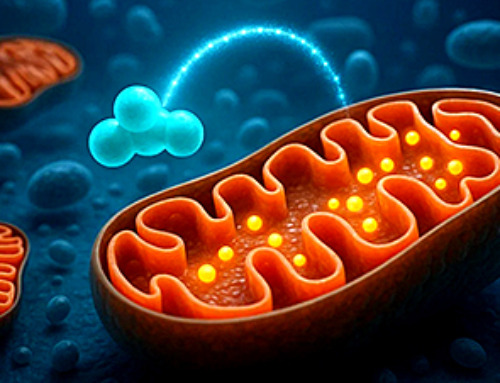A centuries-old architectural technique has inspired a new method for tailoring nanoscale windows in metal-organic frameworks (MOFs), with potential applications in gas separation and medical fields.
A centuries-old technique for constructing arched stone windows has inspired a new way to form tailored nanoscale windows in porous functional materials called metal-organic frameworks (MOFs).
The method uses a molecular version of an architectural arch-forming “centering formwork“ template to direct the formation of MOFs with pore windows of predetermined shape and size. New MOFs designed and made in this way range from narrow-windowed materials with gas separation potential to larger-windowed structures with potential medical applications due to their excellent oxygen-adsorption capacity.
The starting point of the research was a zeolite-like MOF (ZMOF), which usually features pentagonal windows framed by building blocks called supertetrahedra (ST). “Our goal was to control ST arrangement to change from this well-known topology to one not reported before with these building blocks,” Sapianik says.
The team developed centering structure-directing agents (cSDA) to control ST alignment and form ZMOF windows of new shapes and sizes. One set of cSDAs, designed to tighten the angle between adjoining ST units, created small windows. Another set, designed to expand the angle between ST units, gave larger windows.
“MOF pore size and volume are important parameters that affect their application,” says Marina Barsukova, a postdoc in Eddaoudi’s team. One large-windowed ZMOF the team designed, Fe-sod-ZMOF-320, showed the highest oxygen adsorption capacity of any MOF known. “This property is important in the medical and aerospace industries, where the high capacity would increase oxygen storage in a cylinder, or enable smaller cylinders for easier transport,” Barsukova says. The same ZMOFs also performed well for storage of methane and hydrogen, which are potential fuels. Other ZMOFs in the family with narrow windows showed potential for gas separation of molecular mixtures.
The cSDA concept offers multiple benefits enhancing MOF performance, says Vincent Guillerm, a research scientist in Eddaoudi’s group. “The cSDA partitions big windows into smaller ones, which our preliminary results suggest will be useful for chemical separations,” he says. “It also offers additional internal pore surface, which can help to improve gas storage, and reinforces the MOF framework, which should improve the material’s stability,” he adds.
“The centering approach we have developed is another powerful strategy in the repertoire of reticular chemistry, offering great potential for made-to-order MOFs for applications in energy security and environmental sustainability,” Eddaoudi says.
Reference: “Face-directed assembly of tailored isoreticular MOFs using centring structure-directing agents” by Marina Barsukova, Aleksandr Sapianik, Vincent Guillerm, Aleksander Shkurenko, Aslam C. Shaikh, Prakash Parvatkar, Prashant M. Bhatt, Mickaele Bonneau, Abdulhadi Alhaji, Osama Shekhah, Salvador R. G. Balestra, Rocio Semino, Guillaume Maurin and Mohamed Eddaoudi, 2 October 2023, Nature Synthesis.
DOI: 10.1038/s44160-023-00401-8
News
This Tiny Cellular Gate Could Be the Key to Curing Cancer – And Regrowing Hair
After more than five decades of mystery, scientists have finally unveiled the detailed structure and function of a long-theorized molecular machine in our mitochondria — the mitochondrial pyruvate carrier. This microscopic gatekeeper controls how [...]
Unlocking Vision’s Secrets: Researchers Reveal 3D Structure of Key Eye Protein
Researchers have uncovered the 3D structure of RBP3, a key protein in vision, revealing how it transports retinoids and fatty acids and how its dysfunction may lead to retinal diseases. Proteins play a critical [...]
5 Key Facts About Nanoplastics and How They Affect the Human Body
Nanoplastics are typically defined as plastic particles smaller than 1000 nanometers. These particles are increasingly being detected in human tissues: they can bypass biological barriers, accumulate in organs, and may influence health in ways [...]
Measles Is Back: Doctors Warn of Dangerous Surge Across the U.S.
Parents are encouraged to contact their pediatrician if their child has been exposed to measles or is showing symptoms. Pediatric infectious disease experts are emphasizing the critical importance of measles vaccination, as the highly [...]
AI at the Speed of Light: How Silicon Photonics Are Reinventing Hardware
A cutting-edge AI acceleration platform powered by light rather than electricity could revolutionize how AI is trained and deployed. Using photonic integrated circuits made from advanced III-V semiconductors, researchers have developed a system that vastly [...]
A Grain of Brain, 523 Million Synapses, Most Complicated Neuroscience Experiment Ever Attempted
A team of over 150 scientists has achieved what once seemed impossible: a complete wiring and activity map of a tiny section of a mammalian brain. This feat, part of the MICrONS Project, rivals [...]
The Secret “Radar” Bacteria Use To Outsmart Their Enemies
A chemical radar allows bacteria to sense and eliminate predators. Investigating how microorganisms communicate deepens our understanding of the complex ecological interactions that shape our environment is an area of key focus for the [...]
Psychologists explore ethical issues associated with human-AI relationships
It's becoming increasingly commonplace for people to develop intimate, long-term relationships with artificial intelligence (AI) technologies. At their extreme, people have "married" their AI companions in non-legally binding ceremonies, and at least two people [...]
When You Lose Weight, Where Does It Actually Go?
Most health professionals lack a clear understanding of how body fat is lost, often subscribing to misconceptions like fat converting to energy or muscle. The truth is, fat is actually broken down into carbon [...]
How Everyday Plastics Quietly Turn Into DNA-Damaging Nanoparticles
The same unique structure that makes plastic so versatile also makes it susceptible to breaking down into harmful micro- and nanoscale particles. The world is saturated with trillions of microscopic and nanoscopic plastic particles, some smaller [...]
AI Outperforms Physicians in Real-World Urgent Care Decisions, Study Finds
The study, conducted at the virtual urgent care clinic Cedars-Sinai Connect in LA, compared recommendations given in about 500 visits of adult patients with relatively common symptoms – respiratory, urinary, eye, vaginal and dental. [...]
Challenging the Big Bang: A Multi-Singularity Origin for the Universe
In a study published in the journal Classical and Quantum Gravity, Dr. Richard Lieu, a physics professor at The University of Alabama in Huntsville (UAH), which is a part of The University of Alabama System, suggests that [...]
New drug restores vision by regenerating retinal nerves
Vision is one of the most crucial human senses, yet over 300 million people worldwide are at risk of vision loss due to various retinal diseases. While recent advancements in retinal disease treatments have [...]
Shingles vaccine cuts dementia risk by 20%, new study shows
A shingles shot may do more than prevent rash — it could help shield the aging brain from dementia, according to a landmark study using real-world data from the UK. A routine vaccine could [...]
AI Predicts Sudden Cardiac Arrest Days Before It Strikes
AI can now predict deadly heart arrhythmias up to two weeks in advance, potentially transforming cardiac care. Artificial intelligence could play a key role in preventing many cases of sudden cardiac death, according to [...]
NanoApps Medical is a Top 20 Feedspot Nanotech Blog
There is an ocean of Nanotechnology news published every day. Feedspot saves us a lot of time and we recommend it. We have been using it since 2018. Feedspot is a freemium online RSS [...]





















